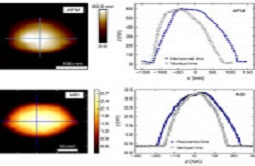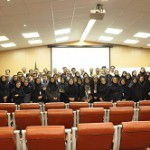Reflections on the SRTTU research achievements
Reflections on the research achievements of Dr. Mehdi Nikamal and researchers from the universities of Manchester United Kingdom and Antwerp Belgium
The recent research conducted by the International Institute for Advanced Technology and the universities of Manchester, England and Antwerp, Belgium, was reflected on the official website of the country’s leading actor. The report, titled nano-bubbles with a diameter 500 times smaller than soap bubbles on elite science is reflected by the achievements of the joint research from the Shahid Rajaee University (doctor Mehdi Nikamal, Associate Professor of the Faculty of Science and Head of the Institute for New Technologies), University of Manchester, UK and University of Antwerp, Belgium, published in the prestigious Nature Communications.
Shahid Rajaee University in 2016 with the introduction of two leading academic in the list of hundreds reported by the elite of the country that the institutional sub-Department of Science and Technology presidency, third in the nation among all universities and research centers accounted.
The text of this news is as follows:
Main link: Nano bubbles with a thickness of 500 times smaller than a soap bubble
Graphene nano bubbles with a thickness of 500 times smaller than ordinary soap bubbles that do not easily break. These bubbles are formed between the graphene’s single layer and the underlying surface and are hard to see with light microscopes, they have little mobility and their surface is of carbon.
We all encountered a bubble of soap and bubbles formed in liquids. These bubbles have a thickness of about half a micrometer and are very weak and have a life span of several seconds. Physicists have been keen on theoretical and empirical study of the bubble from many years ago (since Laplace). The spherically of the bubble, the decomposition of light color, and even the capillary property of all of the issues related to bubble physics, are often well understood and justified by the laws of classical physics. But bubbles that are much more resistant than soap bubbles and have a much longer lifespan have recently been considered by researchers. These bubbles, for example, are formed between grapheme single layer and substrate and are not easily visible with optical microscopes, they have little mobility and their surface is carbon-based. Suppose a soap bubble has a radius of 1 cm, the nanoblock radius is 10 million times smaller, such as the size of the planet (a soap bubble) and a soccer ball (nano bubble). A nano-bubble is formed in the manufacture of grapheme on a substrate of platinum containing air or water, and so on. In 2010, a team of researchers at the University of California-Berkeley was able to observe a scanning tunneling microscope of pyramidal bubbles of less than 5 nanometers. The material used and the chemical processes in the test can usually vary.
The most recently in collaborative research new technologies, Shahid Rajaee Teacher Training University with the University of Manchester and Antwerp, Belgium dependence on the shape and size of bubbles trapped in between the grapheme and the substrate were investigated and resulted in the new issue of the journal Nature Communications by Dr. Nickamad is practicing and simulating his Ph.D. student Mr. Hossein Ghorbanfekar and his colleagues. Modeling and Simulation Method In this paper, the mechanics and molecular dynamics have been studied.





Leave a Reply
Want to join the discussion?Feel free to contribute!